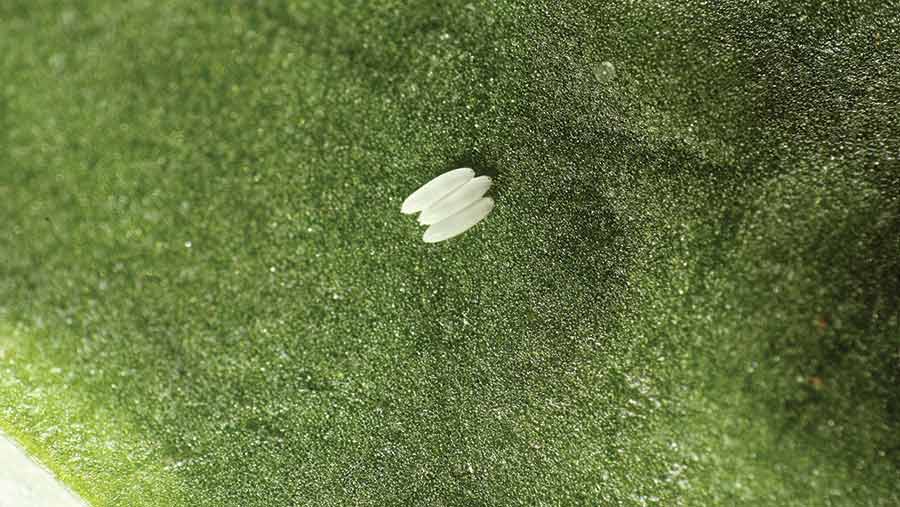Insecticide approved for leaf miner control in sugar beet
 Mangold fly eggs are white, patterned and about 1mm long © Blackthorn Arable
Mangold fly eggs are white, patterned and about 1mm long © Blackthorn Arable Sugar beet growers in England have been granted an emergency authorisation for the use foliar insecticide product Biscaya to control leaf miner.
Leaf miner – the larvae of the mangold fly – only started to become a significant problem in recent seasons, with an increase in its geographical spread and damage caused to crops.
Last year, in response to the worsening problem, the British Beet Research Organisation (BBRO) successfully applied for an emergency approval for the thiacloprid-containing product to give growers some control.
See also: How to counter the rising leaf miner threat in sugar beet
The application was repeated this season and, helped by extensive research carried out by BBRO and Adas, has regained its emergency authorisation for leaf miner control in 2016.
The authorisation is effective from the 21 June and is in place for 120 days until 18 October.
Sprayer operators should use a minimum water rate of 200 litres/ha and no more than two sprays can be made to English sugar beet crops, with a maximum individual dose 0.4 litres/ha.
BBRO said current observations indicate leaf miner populations are between first and second generations at present and overall, crop damage does not appear to be increasing.
Treatment
Recent wet conditions may have reduced activity of adults, but new eggs will continue to be laid over the coming weeks and crops should be assessed for the need for any treatment.
BBRO trials have shown that the most effective stage for insecticide treatment is at egg hatch/larval emergence.
For many crops, this may be over the next few weeks and BBRO stressed the importance of assessing crops to ensure any use of Biscaya is at the optimum time.
Lead scientist Mark Stevens also reminded growers that threshold for treatment is when the number of eggs and larvae exceeds the square of the number of true leaves.
For example, a plant with six true leaves would need a population of 36 or more eggs and larvae to warrant treatment. A crop with 10 true leaves would need a population of 100 or more eggs and larvae.
The underside of leaves is the best place to look for eggs and larvae to determine pest numbers.
“The approval came through much quicker than last year and the worsening problem combined with another mild winter meant the application was a necessity and we are pleased to provide a tool to help growers,” said Dr Stevens.

